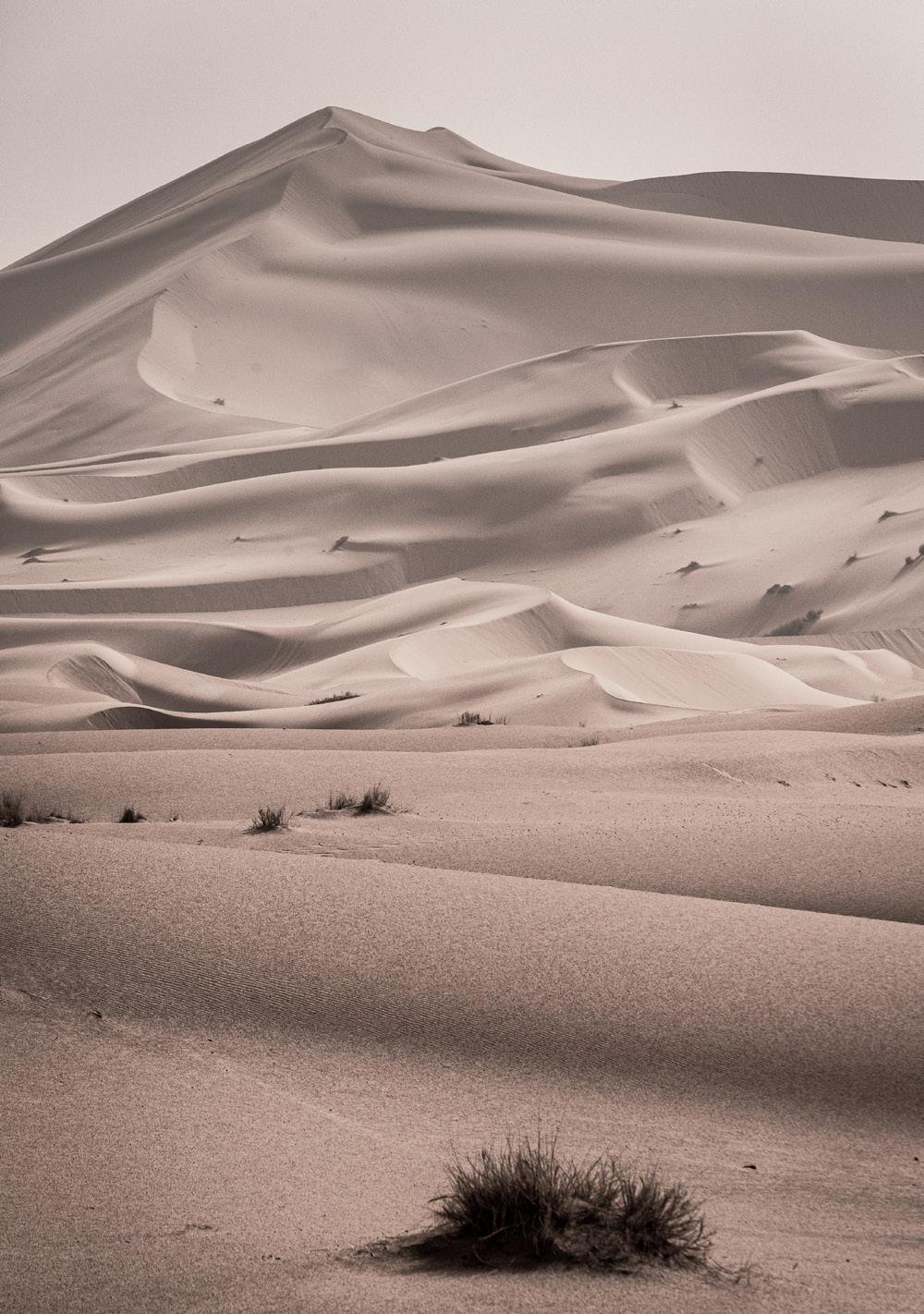
4 minute read
FRAMEWORK DESERTIFICATION
from AEOLIAN - AADRL
by Salim Hilles

Desertification is the degradation of land by transforming fertile earth to dirt, terraforming an environment lush with life to an extreme environment where life is unable to thrive. The desert expands through a process called “soil erosion”, which describes how nutrient rich soil is stripped away from the land through the actions of the wind and rain. This phenomena is caused by variations in climate which is attributed by human activities such as urbanization, agriculture, and extraction of resources. Urbanization requires an extensive amount of land and energy to be self sufficient. Agricultural practices overuses, fertilizes, and treats soil to an extent where it becomes at risk of erosion. Resource extracting operations such as oil fields and mining strips essential elements from land by terraforming the landscape to a harsh environment. Reduced water retention capacity of degraded soils amplifies floods. It reinforces degradation processes through soil erosion, and reduces the annual intake of water to aquifers, exacerbating existing water scarcities.
Advertisement
Desertification is generally associated with biodiversity loss whilst many species within drylands are threatened with extinction. “For example, species richness decreased from 234 species in 1978 to 95 in 2011 following long periods of drought and human-driven degradation on the steppe land of southwestern Algeria. In North Africa, long-term monitoring (1978–2014) has shown that important plant perennial species have also disappeared due to drought.”1

About 821 million people globally were food insecure in 2017, of whom 63% in Asia, 31% in Africa and 5% in Latin America and the Caribbean. The global number of food insecure people rose by 37 million since 2014.
There is also robust evidence of the negative impacts on agricultural productivity and incomes due to desertification. Cultivating wheat, maize, and rice with unsustainable land management practices is currently resulting in global losses of 56.6 billion USD annually, with another 8.7 billion USD of annual losses due to lower livestock productivity caused by rangeland degradation.
Climate change impacts migration as well. UN investigations predicted that around 250 million people would be displaced by 2050 if no climate action is taken.
In addition, this effect is exacerbated as plants are removed from the environments. Plants are capable of absorbing carbon dioxide and using it as a source to produce oxygen and transporting nutrients to Earth. Reducing the plants population decreases the amount of carbon dioxide removed from the air, which contributes to the warming of the earth, deserts’ expansion, desertification.
Desertifying Areas On Earth
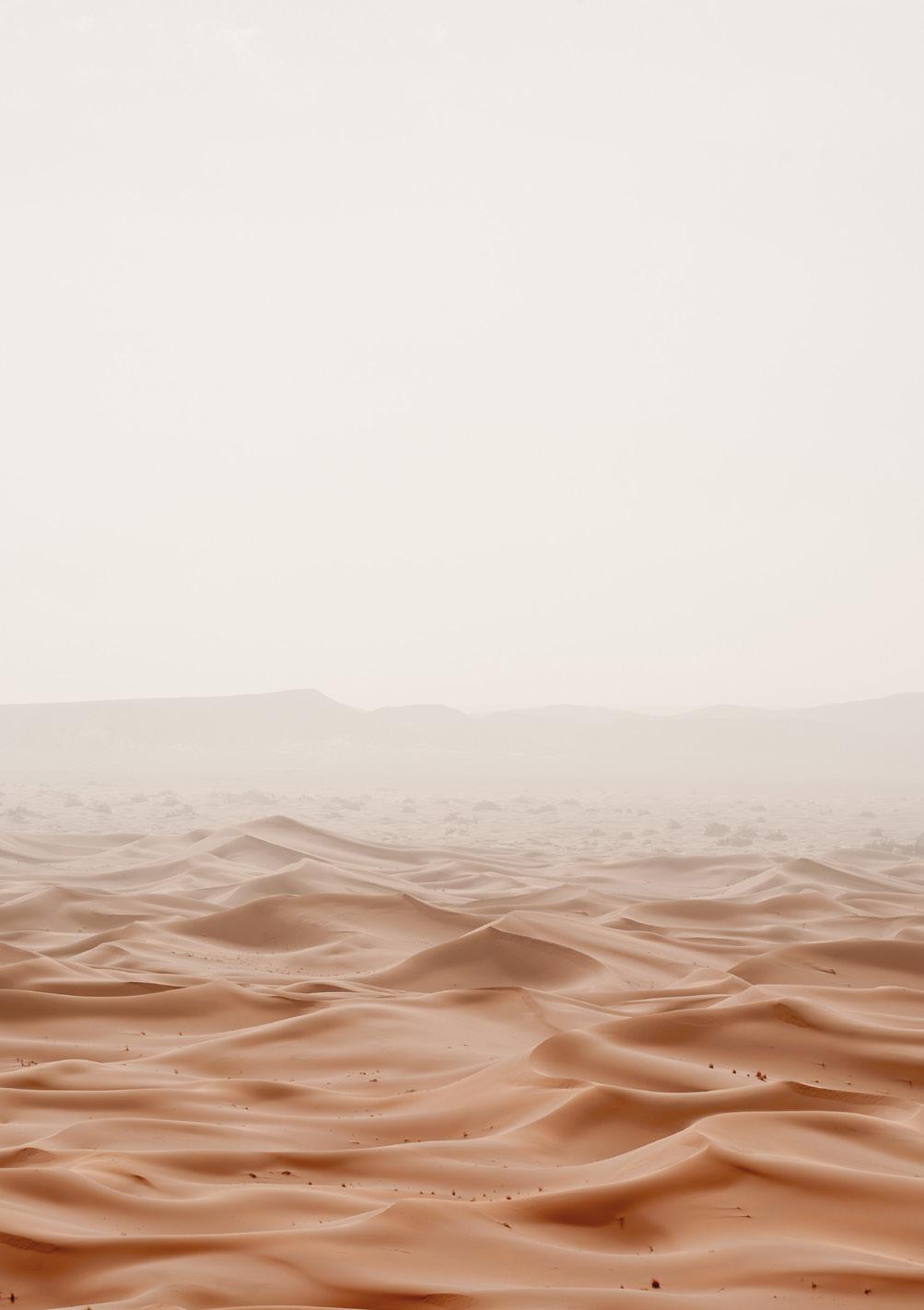
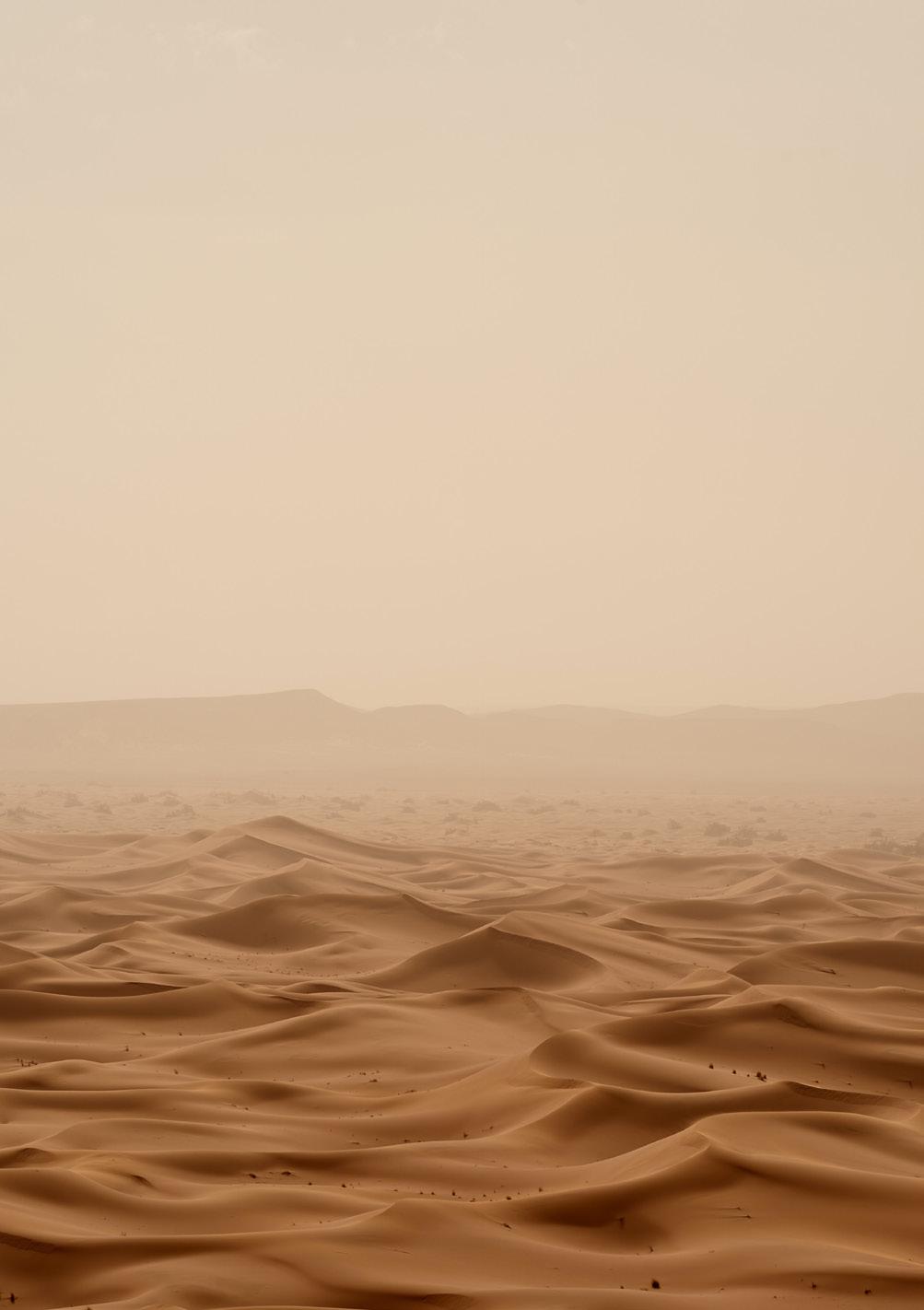
Desertification currently occurs in arid, semi-arid, and dry sub-humid areas of the world, home to approximately 3 billion people. Over the past several decades, the range and intensity of desertification have increased in dryland areas. Figure 1 shows a map of areas in the world suffering from the effects of desertification. These areas are identified by the decline of vegetation over time between the 1980’s until present. As seen on the map, areas that would be most affected are in Australia, South and East Asia, the Sahara region in North Africa, the Middle East, Mexico and the Eastern States in the United States of America. Additionally, some parts along South America could also be affected.
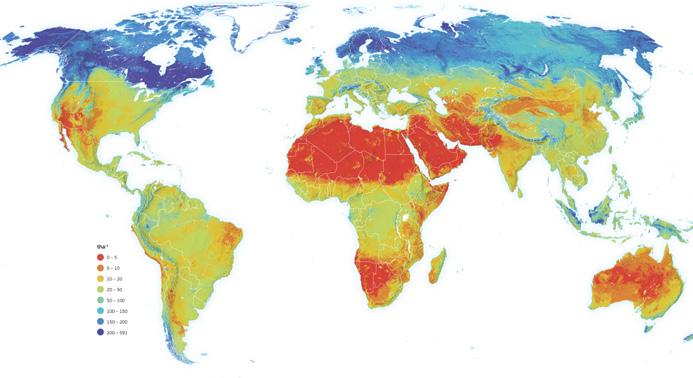
Impact On Life On Earth
Desertification places significant environmental, social, economical, and political stress on humanity through the damage of ecosystems and the eventual competition on the little available resources. Additionally, all forms of lives on earth would be at risk, disrupting the global chains. Already has the effects of desertification reduce productivity and income in the agricultural sector and over extraction of water have depleted supplies.
Seasonality
Depending on the time of the year, the ratio between vegetation and desert goes through dramatic changes that influences the global ecosystem. This is due to the fact the plants grow best at certain temperatures. In areas with cold temperatures, plants go into a state of hibernation while in areas with hot temperatures, plants are unable to grow. The summer time is an essential time of the year where plant growth is at its highest as seen (on the right) for the months of June, July, and August, while it is at its lowest in winter months of December, January, and February. In countries that experience monsoons, the change in landscape is extensively dramatic. Prior to the monsoon season, the landscape is bare and dry. After the monsoon, the landscape is green and full of life, as seen in the images below.
Using satellite images from NASA’s earth observatory allows a comprehensive visual understanding of global-scale patterns of vegetation. These diagrams are often used by scientists and other experts to study changes in the biome. Additionally, it helps analysing the activity of photosynthesis and its ability in removing carbon dioxide from the atmosphere (a study of carbon cycles). Desertification has made the shift more drastic, occupying more land than the norm.
CARBON DIOXIDE EMISSIONS:
As the process of desertification occupies and transforms green life to deserts, carbon dioxide absorbtion decreases, resulting in increased levels of CO2 emissions, heating the earth further.
DROUGHT:
Due to increased temperatures, water sources such as lakes are prone to evaporation, Drying land that previously hosted an abundance of life. Dry lands are incapable of hosting any form of life to thrive in such conditions.
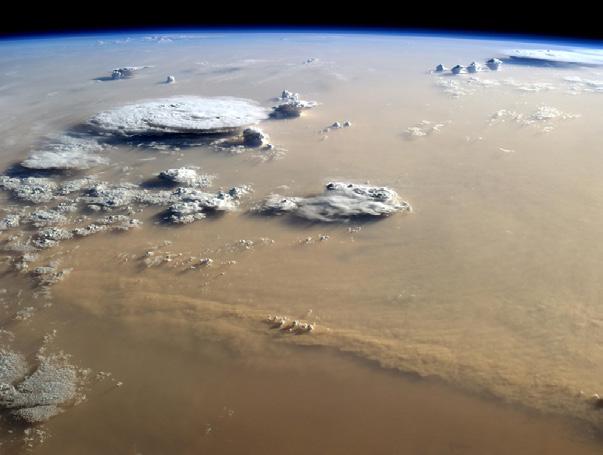
MALNUTRITION:
Farm lands are significantly affected by desertification either by drought or wind erosion. Drought dries land, makes crop growth difficult or not possible. Wind erosion carries fertile soil away from the land, transforming microbes found in soil to dirt.
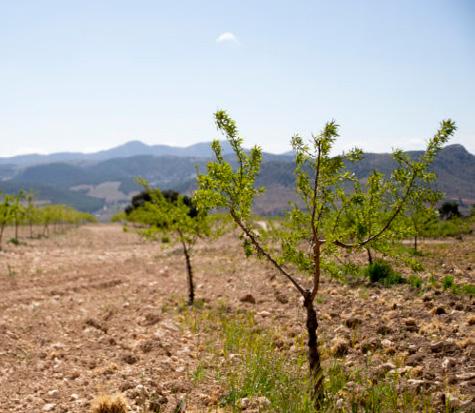
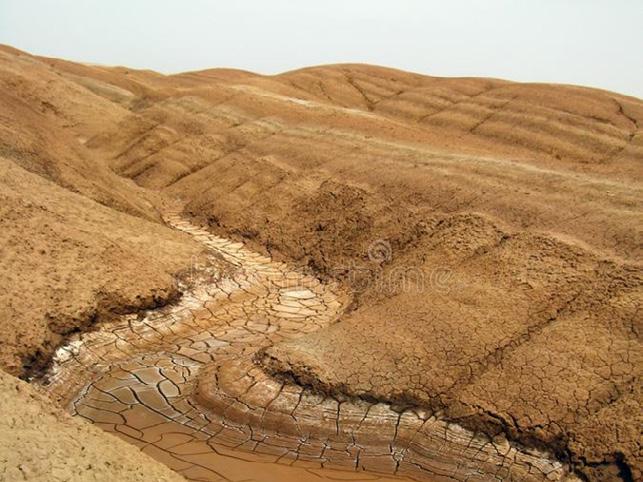
MASS DISPLACEMENT:
As the effects of desertification eradicates water sources and farm land, expands onto civilized land, those living near affected land are forced to migrate. In addition, a lack of resources often generates competition for resources which often result in violence and war. According to the United Nation’s World Water Development Report, it is estimated that by the year 2050, approximately 200 million people could be displaced as a result of desertification.
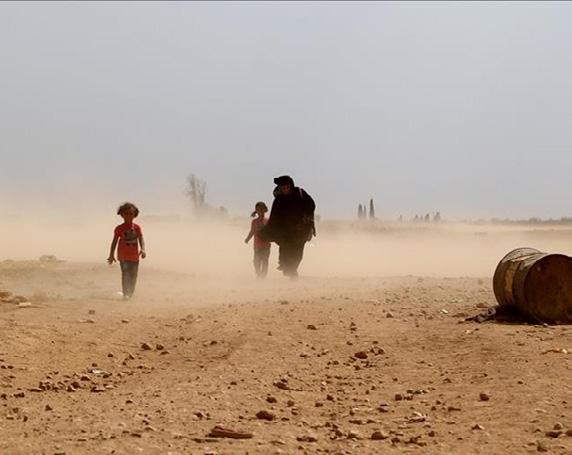
Desert Overtake Sahara Desert Expansion
As the process of global warming accelerates, the desertification expands as well. The Sahara desert expanded for more than 10% since 1920.1 According to the satellite images, the expansion of Sahara is accelerating during the last decade.
Richard Gray, “The wall holding back a desert”, BBC, September 9, 2019. https://www.bbc.com/future/article/20190902-the-wall-holding-back-a-desert#:~:text=Over%20the%20 past%20century%2C%20the,km%20over%20the%20same%20period.
The desert keeps overtaking living environments. For the 20 years, it may take 50 meters of vegetation. Greenery on the border with the desert is extremely vulnerable. Sand literally is burying the growing plants. If the plant is young, small and fragile, it barely has chances to rise under the pressure of the sand.
Natural Barrier Dune Movement
In the desert rocks and hills organise natural barriers. Located under the angle to the wind direction, the sand is moving avoiding the space behind the barrier.
The desert keeps overtaking living environments. For the 20 years, it may take 50 meters of vegetation. Greenery on the border with the desert is extremely vulnerable. Sand literally is burying the growing plants. If the plant is young, small and fragile, it barely has chances to rise under the pressure of the sand.










